You may wonder, like I do, if companies are still planning cloud migration initiatives in 2025 and the near future. A quick internet search says “Yes.” Cloud migration is still ongoing and has even accelerated, with many organizations moving more applications to the cloud and embracing hybrid or multi-cloud strategies. While some companies are finishing their initial migrations, many others are in the process of starting new migrations.
The benefits of cloud migration are numerous, fueling the expected growth of the industry. There are many cloud migration ROI “calculators” provided by major cloud platforms and solution providers that help you account for hard and soft costs, such as Amdocs, Evaluating the ROI of Cloud Migration. But few, if any, help you estimate the labor cost required to make software applications operational in a cloud environment. If your software cost estimates are too low, then your cloud migration ROI is too optimistic.
Although the cloud migration process is somewhat straightforward, the time and effort required to complete these types of projects vary greatly due to organizational needs and goals, the age of legacy applications, IT infrastructure, and other factors. This study looked at the impact of software size on project duration, effort, and team sizes what insights we could share to help you improve the ROI calculations of your future cloud migration or data transformation initiatives.
Cloud Migration Data Analysis
Quantitative Software Management (QSM) has been collecting and analyzing completed software project data for over 46 years. The QSM Industry Database supports software project research, performance benchmarking, and estimation, and is a key component of the SLIM-Suite® software. Our data shows that the software application type, such as Real-Time, System Software, Process Control, or Business, is the largest determinant of project outcomes.
To see if cloud migration projects “behave” like other business IT projects, we analyzed the duration, effort, and staffing data for over 80 cloud migration projects in the Government and Financial industry sectors. This data captures the software development work done to refactor and rebuild applications to operate in a cloud environment – 39% Major Enhancements and 34% New Development.
Not only do the core software metrics of duration, effort, cost, staff, quality, and productivity increase with software size (regardless of project type), they increase in a nonlinear fashion. This means that the time and effort required for large projects is disproportionately higher than for small projects. To facilitate comparisons, we stratified the data into size bins:
- < 10,000 SLOC[i]
- > 10,000 to < 25,000 SLOC
- > 25,000 to < 50,000 SLOC
- > 50,000 to < 100,000 SLOC
- > 100,000 SLOC
The charts below show minimum, maximum, median, and average values for software project Duration (months), Effort (person-hours), and Average Staff (FTEs), also referred to as Team Size. Here’s what we observe:
- There is a wide range between the min and max for all metrics, which is expected but not fully realized or appreciated until you gather and analyze historical data. The range is higher for effort.
- Duration increases with size are in line with “reasonable” expectations. The average duration for small projects (< 10 K SLOC) is 3.6 months, compared to 24.63 months for the largest group of projects (> 100 K SLOC). Another interesting observation is one we have seen over the years: software project durations are often close to 9, 12, 18, and 24 months. This is because government and commercial contracts frequently specify performance periods of these lengths, and the human mind tends to prefer familiar timelines, e.g., 12 versus 10 months. The maximum duration for projects > 25,000 SLOC is greater than 42 Months.
- Average values for Average Staff, or team size, range from 7.8 FTE[ii] to 4.9 FTE. Projects between 10,000 SLOC and 100,000 SLOC used twice as many staff as smaller projects, and projects larger than 100,000 SLOC used five times as many people. Large teams equate to high costs…
- Effort increases dramatically with software project size! The average effort expended for projects < 100,000 SLOC is 2.5 to 3.0 times higher with each ??? size bin. The effort required for larger projects is 3.5 times higher. What is more noticeable is the increase in the maximum effort with software size, which shows the potential risk of software costs spiraling out of control. This is likely a result of the nonlinear tradeoff between time and effort modeled in the SLIM methodology. As organizations strive to compress project schedules, the effort required to meet those schedules increases very quickly.
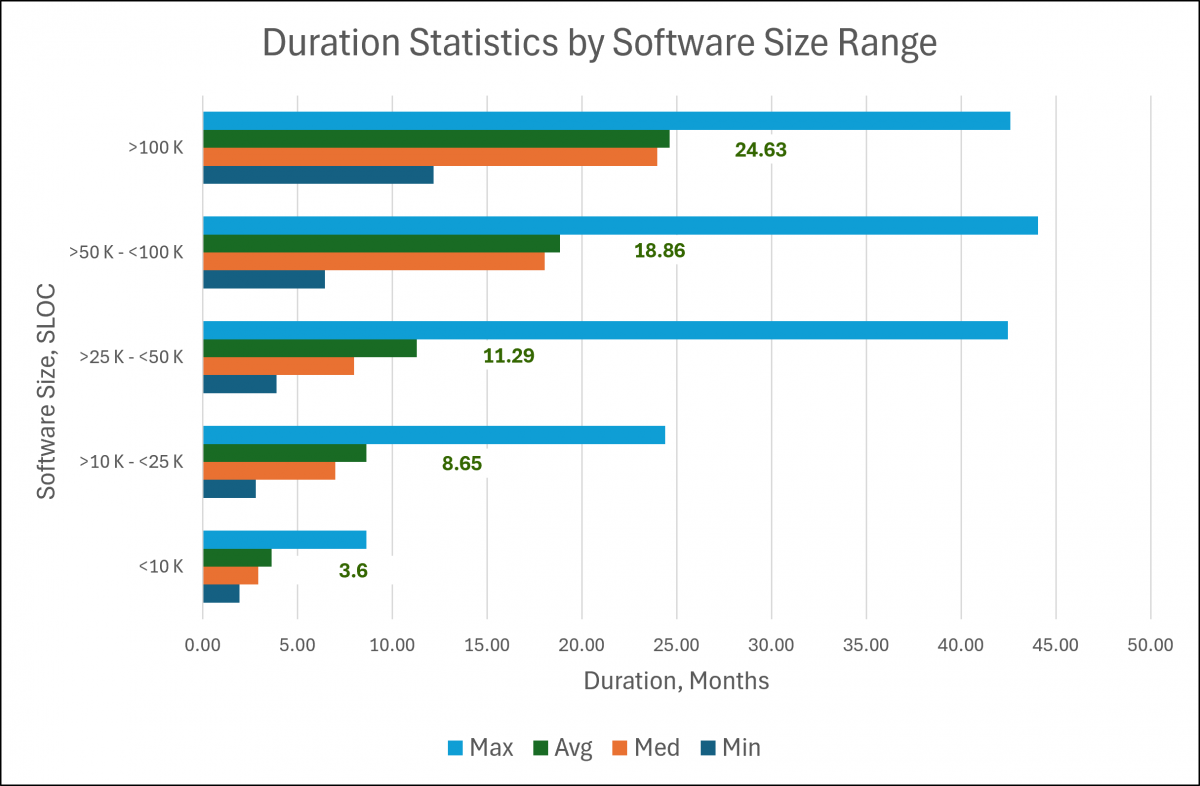
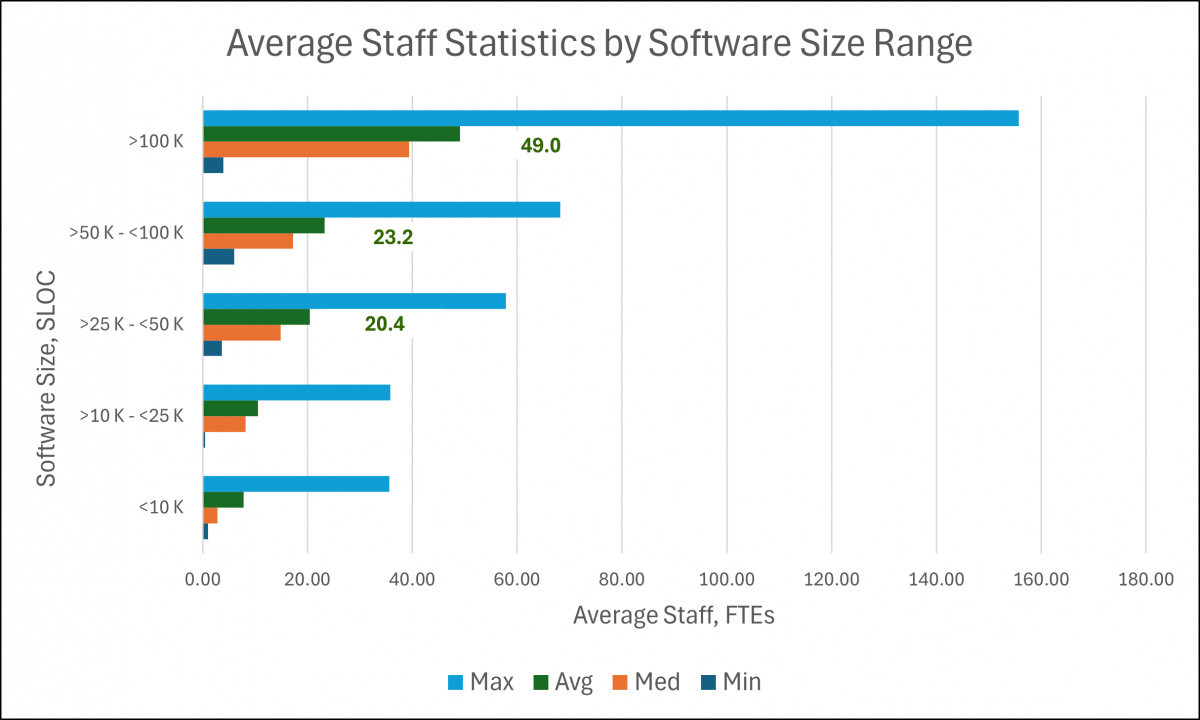
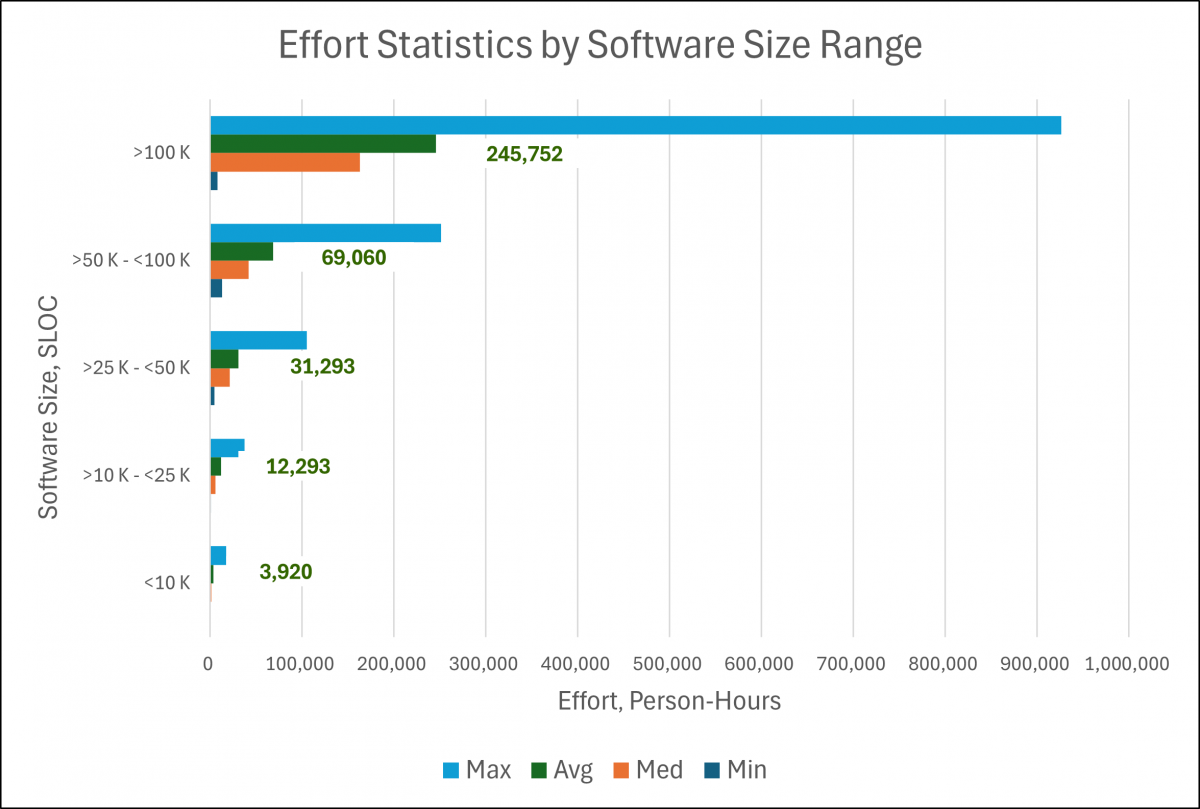
Cloud Migration Compared to Industry Trends
Regression trend statistics used in SLIM-Suite applications for estimation, tracking, and performance benchmarking (QSM industry trends, or custom trends based on your historical data) show the typical software project outcomes or behavior for different application types.
The charts below compare average values for Cloud Migration projects to the QSM Business industry trend averages for duration, effort, and average staff. It allows you to see the difference in the rate of increase for each metric as software size increases. Cloud Migration projects required more time, effort, and staff for all software size ranges.
The data clearly shows that Cloud Migration projects cannot be estimated, planned, or managed like typical business IT projects. They are complex. There are many moving parts. As team sizes increase, so do the challenges of coordination and communication, which tend to decrease productivity and extend project schedules. Each additional month needed has a huge impact on the total labor cost.
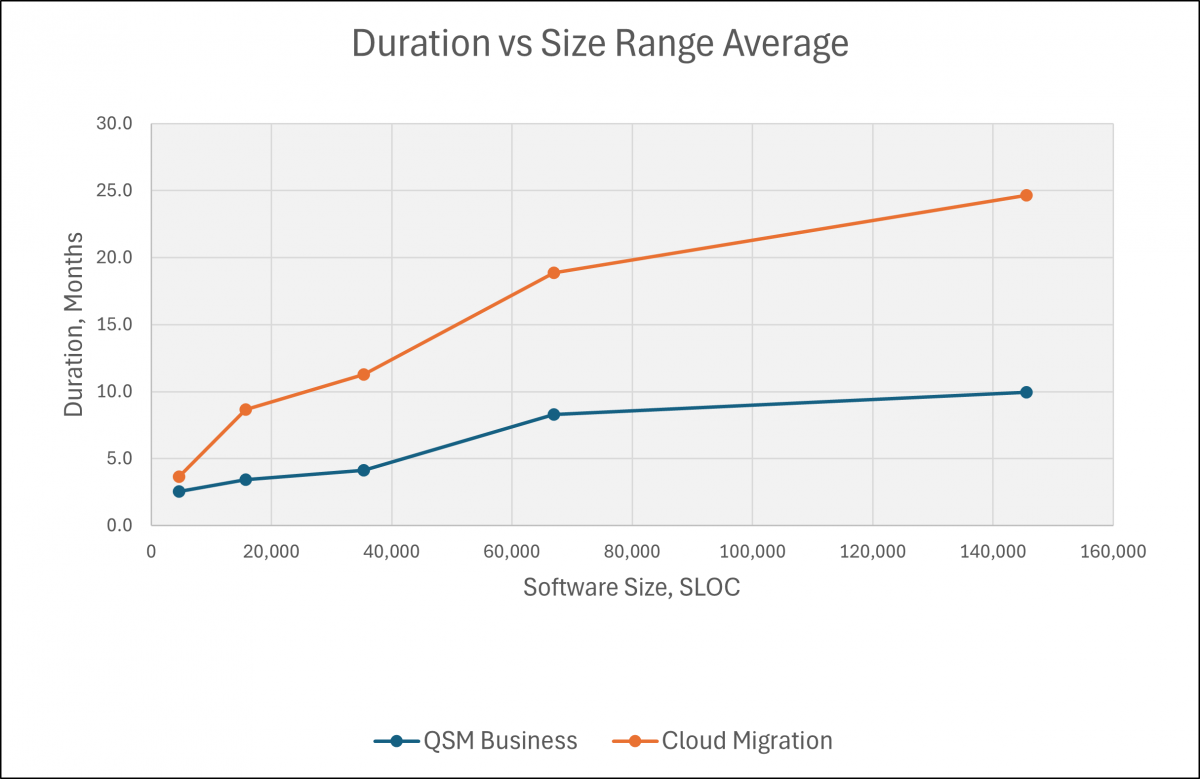
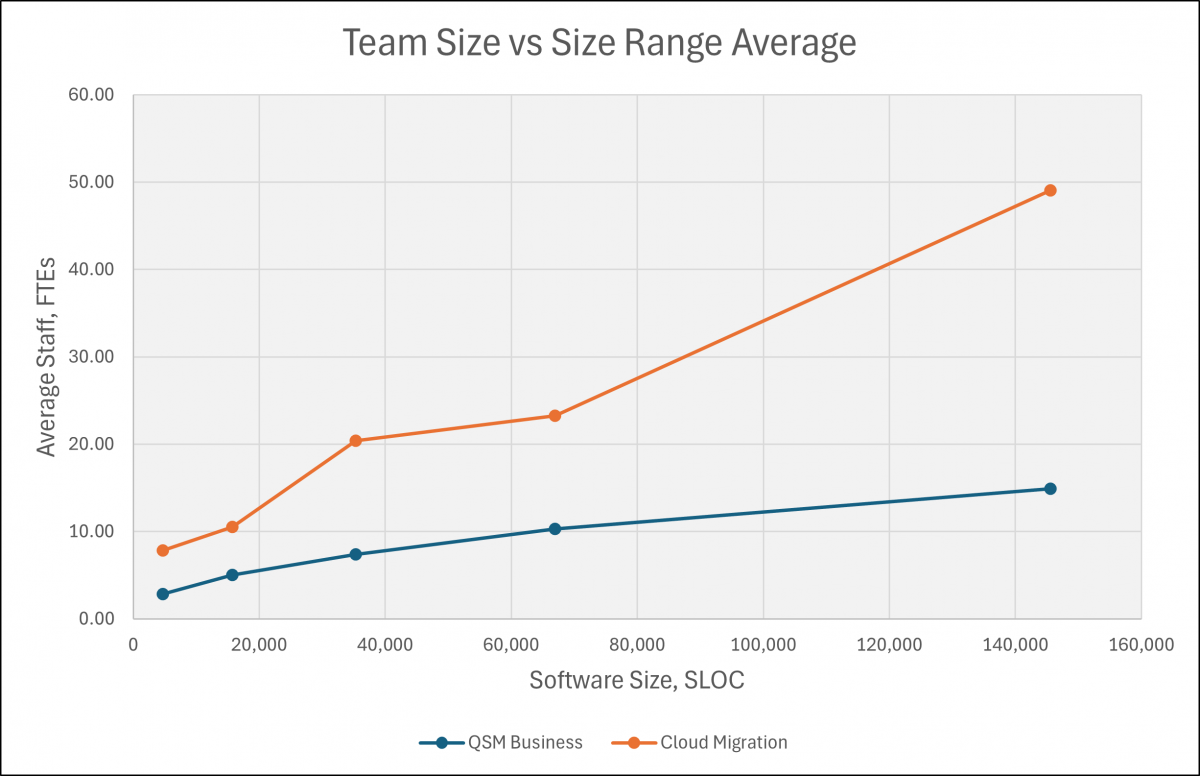
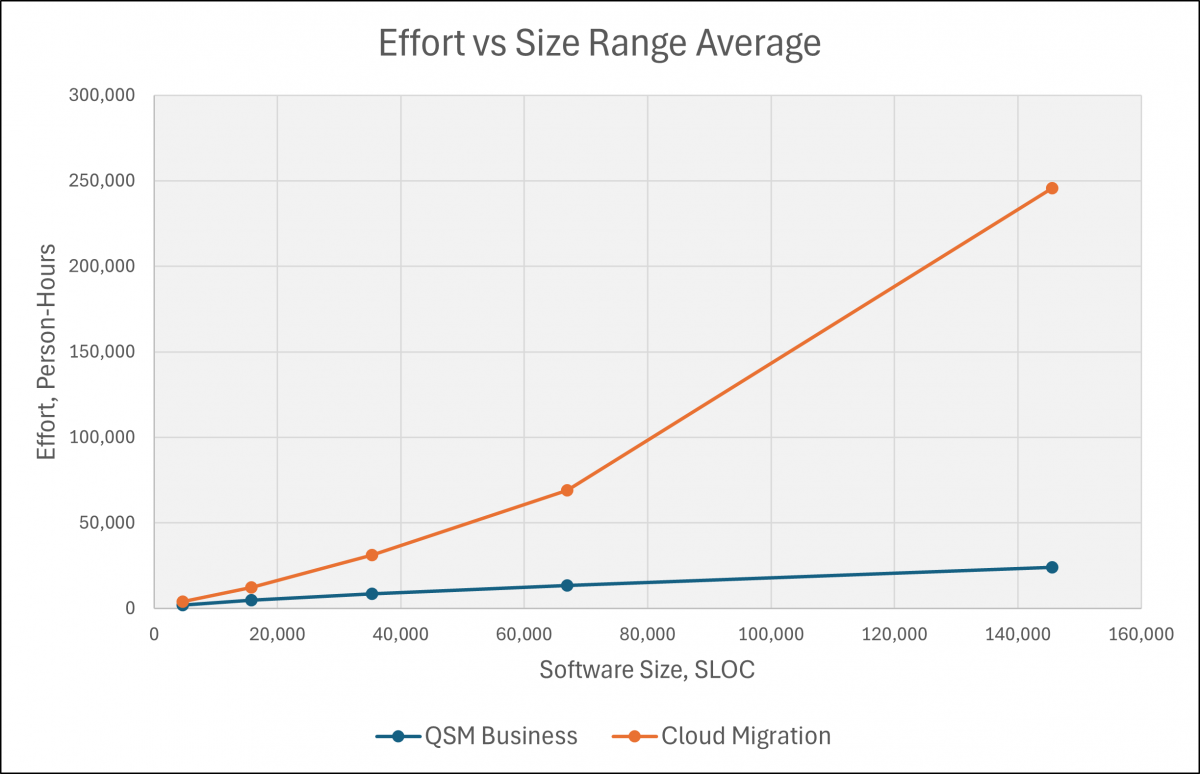
Summary
Cloud migration projects are ongoing and projected to increase in the near future. Technological advancements and increased organizational experience will hopefully simplify the process, allowing many more organizations to realize the benefits of making the move. A critical part of ROI calculations is accurately estimating the effort to refactor and rebuild software applications. Cloud Migration projects require significantly more time, effort, and staff than typical business projects. The desire to complete these initiatives quickly, typically in one to two years, results in larger team sizes and levels of effort, and therefore higher costs, than most organizations anticipate. Project scope also has a dramatic impact on costs; thus, smaller projects will tend to have higher ROIs.
We hope this analysis will help you improve your cloud migration project estimates. We would love to know about your experience or answer any questions you may have.
[i] Source Lines of Code
[ii] Full-Time Equivalent
